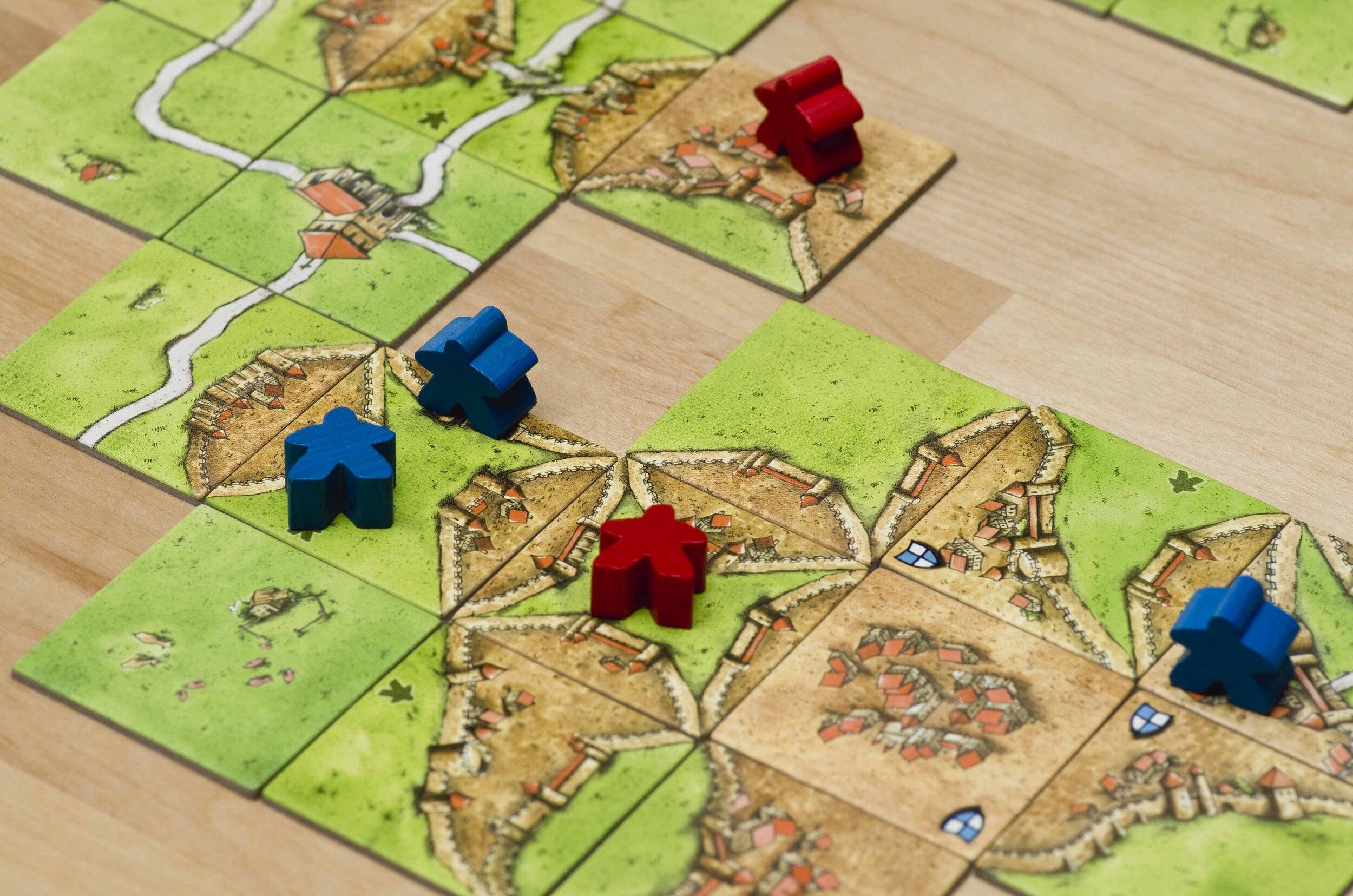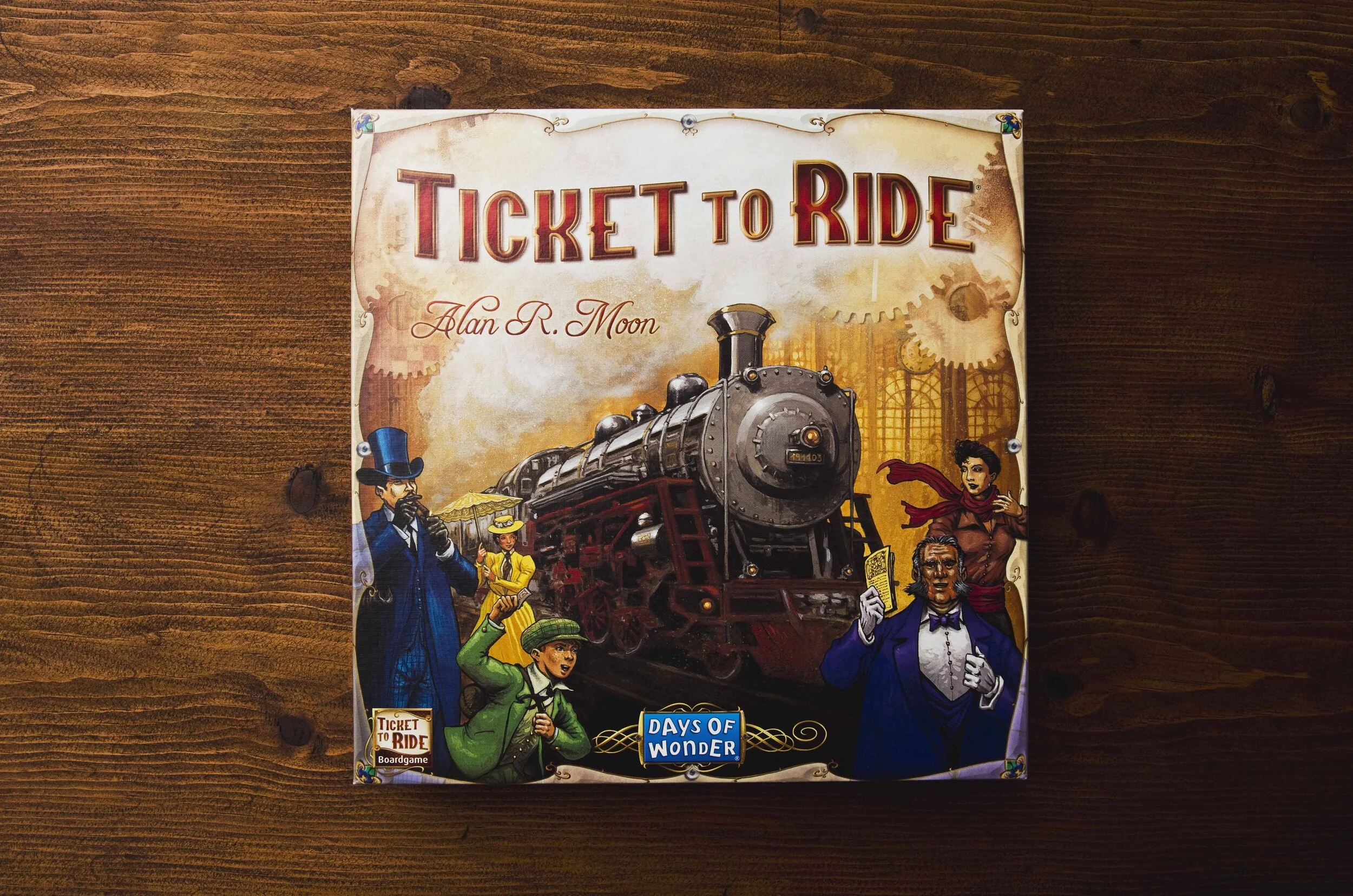Carcassonne: A Review
The modern classic review of the evergreen tile-laying game.
Publisher: Z-man Games Created by: Klaus-Jürgen Wrede
I owe a lot to Carcassonne. It introduced me to the meeple—that little guy that sits at the bottom of this page as the footer icon. If you aren’t aware of what I’m talking about go on and scroll down, I’ll wait…back? Yeah that thing. It’s the defacto symbol of the gaming community. You see it on logos, on t-shirts, and I’m sure on a few tattoos that gamers wear with pride. On that alone, we can thank Carcassonne.
Carcassonne also introduced me to the modern gaming scene. Or rather, a reintroduction to board games coming from an early age of experiences fraught with the likes of Monopoly and Candy Land. Not to malign those “classics” mind you, they have their place, but Carcassonne was part of the wave of modern board games in the early 2000s signaling a shift in what board games could be.
No longer was gaming dictated solely on the whims of dice. It was more thought provoking. It challenged you in thinking about placement, or opportunity, or just concepts of what themes board games could take on. What? A middle-age walled city in the south of France? This is where we’re playing? Farmers? Really?
Really. And for a lot of people, this is what opened up new experiences into the hobby.
laying it on the table
Meeples Claiming Features
The principal reason I fell intrigued by Carcassonne was its most obvious and persistent mechanic. Pick up a random tile and place it on the table. It’s frightenedly simple. The concept isn’t hard to understand just as long as you can connect and match the little features printed on those tiles. Road to road, city wall to city wall, field to field, uninterrupted in their continuous lines.
It’s an easy going experience, one that doesn’t stress the player in an ever growing, divergent decision tree. Your table space, over time, will start to give way to tile placements, going this way and that. Straight forward, to the point, but the end result is an emerging tapestry of tiles creating a satisfying map entwined with cities, roads, monasteries sprinkled throughout a pastoral background. It’s therapeutic in its own way, and at face value, maybe just a bit shallow for it to be a game worth remembering 20 years down the line.
At some point, there has to be talk of strategy and tactics to make the game more interesting than a quaint puzzle to patch together—its depth not represented initially at a first or second play. It’s nice seeing the medieval urban sprawl. However nifty enough as that is, the real consternating decisions with consequences made are strictly due to those meeples. We can create a map with a minutia of cites and roads, but they are for naught if you can’t score them at all. With your collection of meeples you can. This is the game, after all.
meeples and their novelty
A Meeple in a Field
Meeples are the go getters of this game. Your workers dutifully doling out victory point after victory point when completing features on the map you build tile by tile. In Carcassonne the way to score points is by enclosing a city within its walls, or by connecting a road from one endpoint to another, or by surrounding a monastery all around with tiles, or finally by using fields to feed cities at the end of the game. Acquiring said points is as easy as setting down a meeple on a tile you just placed (and only then) when you want to complete a feature of that tile. Designations of knights, monks, thieves, farmers, they are all represented by the little colored meeple of your choice depending on the feature you placed them on.
In a city, it represents a knight, on a road a thief, on a monastery a monk and when laid down as if resting on a field after a hard days work, a farmer. Mind you, this is just to add theme to the whole procession. In reality it’s just to claim something on the developing board before anyone else can, giving you exclusive rights to score it should you finish it. However, trying to score these features can be risky. You see, once you put a meeple down on a feature, you can’t retrieve it until that feature is finished. There is potential of your meeples to be stuck on the map, never coming back to you to start other projects if certain tiles don’t appear. This is where Carcassonne soon starts to be more convincing of its depth—and to add to this—it’s potential for meanness.
What say you? This game can be combative? Yup. The box art might lull you into thinking there is a pleasant, subdued, fairy tale demeanor in all of this, but dig deeper and its bellicose nature can turn on you with a couple of meeple placements by your opponent. I mean, look at the shifty-eyed dude in the yellow cloak holding onto the pommel of his blade in the picture below. There are teeth to be pulled, should the need arise in Carcassonne.
Rio Grande Games Version of Carcassonne
mean streets
When I talk about meanness in this game, it’s not in a direct combative nature. I love small forms of antagonistic opportunities. I may not be into a war games, but give me tiny morsels of poking my fellow players in the gut, and I relish those instances of polite pugilism. In Carcassonne you can make a choice as to when and how to screw over an opponent—or abstain if pacifism is your guiding principal. In the instances where you need to be the bad guy, the way to do that is by infiltration of an already established feature they might be holding on to.
For example, say your opponent has been massaging a large city, adding tiles here and there, if you manage to connect your city with clever tile placements to theirs, at the completion of that feature, both of you earn the spoils. If you want to dig the dagger deeper, you can outright steal it from under their nose. See a key feature in the rule set is that the way to score points is by having the most followers (meeples) in a completed feature, be it road, city or field. So if you can outmaneuver your opponent into having more followers than them in say a city, you can claim all points for yourself.
Suddenly, the map isn’t so peaceful. It’s no mans land! A battlefield where you marshal your meeples into conditions where you outnumber your opponents for points. This is more pressing when end game points from fields can shatter pole positions held throughout the game. Scoring farmer’s fields can swing a game from lost to won in a few single meeple placements. There are real consequences by abstaining from putting down meeples as farmers too late. If you can’t claim a field because someone is already there, you might be missing out on crucial points. However, the threat of putting farmers too early, since you don’t get them back once placed down, can mean the lack of meeple power to spread your opportunities to score on multiple fronts.
Ahhh! It’s such a head scratcher, some of these decisions, but these are the sort of choices that gives Carcassonne some oomph in its play. How mean, callous in your sparring you are against other players is just as compelling as trying to be a friendly and neutral neighbor to them as well. The potential for a battle or a stroll in the park is there and any route you take is a good one.
still a good first step
Carcassonne is still, in my opinion, a great game to introduce people into modern board games. Its concept is refreshing for those not exposed to what this millennia of board games provide. Tiles, meeples, and some table space is all you need to get started to play. It’s an evergreen title. It will always be in print and the expansions give Carcassonne new tactical acumen for veteran players to mull over.
For me, if I ever need to ease newcomers to board games, this is one of the first titles I set on the table. You can ramp up the difficulty as much as you want, getting people comfortable with the mechanics before stealing their city for the first time. It’s portable enough to bring along trips, or get togethers and the theme is inoffensive and safe for most people without weirding anyone out with mechs or flaming swords.
So if you’re looking for that first big step, or getting something on the table that’s both enjoyable and full with depth, Carcassonne is still one of the best classic titles from the early years of modern board gaming. A definite buy, and automatic place on my library of games I’ll never get rid of.
To Consider:
+ Easy to teach
+ Scales well between 2 - 4 players
+ Expansions available to extend play and complexity
+ Great for kids and adults
+/- Has take that elements, but not necessary for victory
- Can be a table hog; ample table space needed











